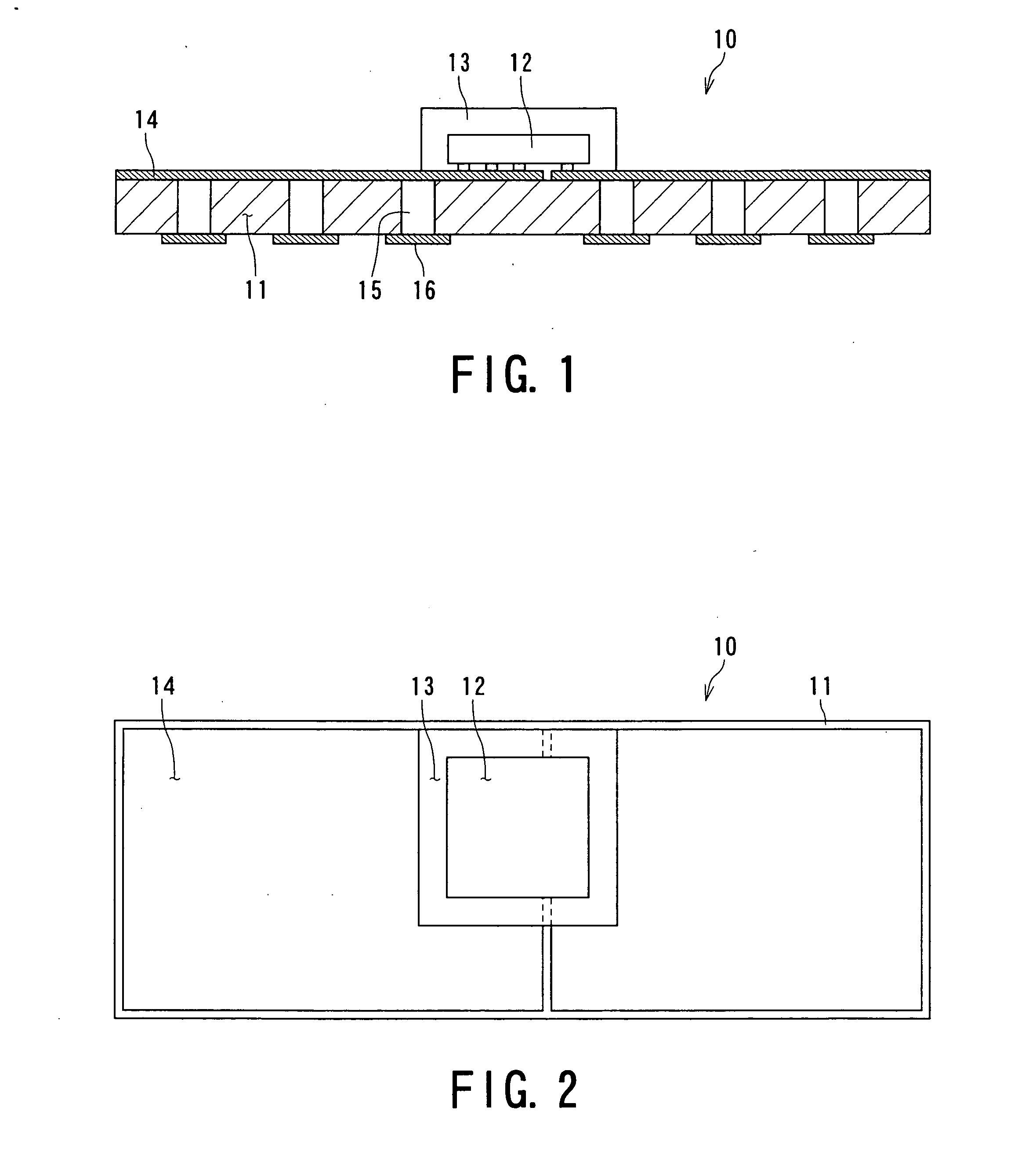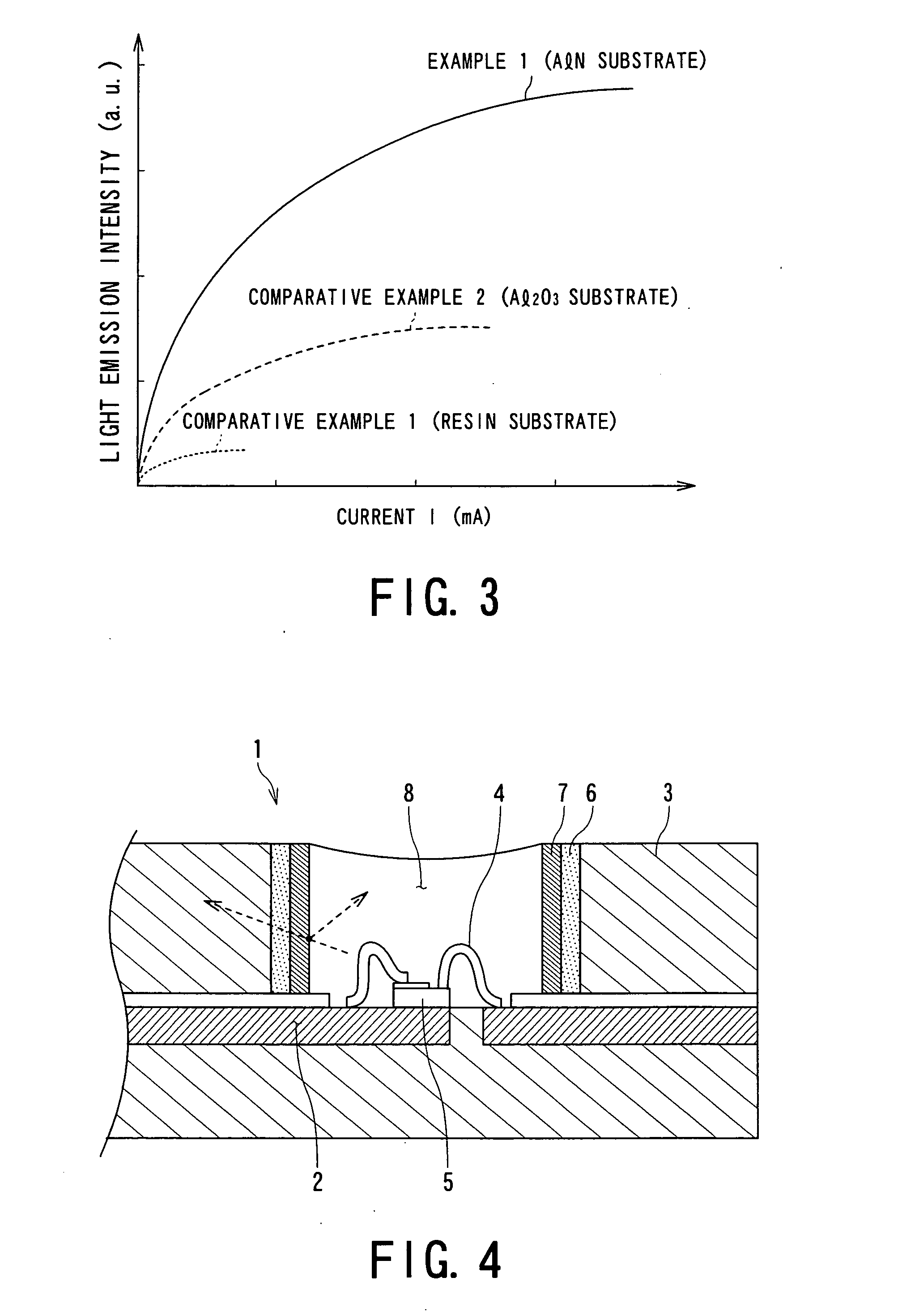Light Emitting Device
a technology of light emitting device and light emitting device, which is applied in the direction of discharge tube luminescnet screen, discharge tube/lamp details, electric discharge lamps, etc., can solve the problems of low thermal conductivity, fatal defect of very poor heat radiation performance, and conventional light emitting apparatus, etc., to achieve efficient formation, increase the reflectivity of emitted light, and improve the effect of luminan
- Summary
- Abstract
- Description
- Claims
- Application Information
AI Technical Summary
Benefits of technology
Problems solved by technology
Method used
Image
Examples
example 25
[0048] As is shown in FIGS. 5A and 5B, a white resist film 18 was formed by applying, by screen printing, a white solder resist ink to a gap (gap between traces) 17 between vapor-deposited metal films 14 and 14 to be conductive layers in the light emitting apparatus prepared in EXAMPLE 1. Then, a LED chip 12 as a light emitting 15 device was mounted and fixed on the vapor-deposited metal films 14 via flip chip bumps 19 to thereby yield a light emitting apparatus according to EXAMPLE 25.
PUM
| Property | Measurement | Unit |
|---|---|---|
| surface roughness | aaaaa | aaaaa |
| reflectivity | aaaaa | aaaaa |
| surface roughness | aaaaa | aaaaa |
Abstract
Description
Claims
Application Information
 Login to View More
Login to View More - R&D
- Intellectual Property
- Life Sciences
- Materials
- Tech Scout
- Unparalleled Data Quality
- Higher Quality Content
- 60% Fewer Hallucinations
Browse by: Latest US Patents, China's latest patents, Technical Efficacy Thesaurus, Application Domain, Technology Topic, Popular Technical Reports.
© 2025 PatSnap. All rights reserved.Legal|Privacy policy|Modern Slavery Act Transparency Statement|Sitemap|About US| Contact US: help@patsnap.com



